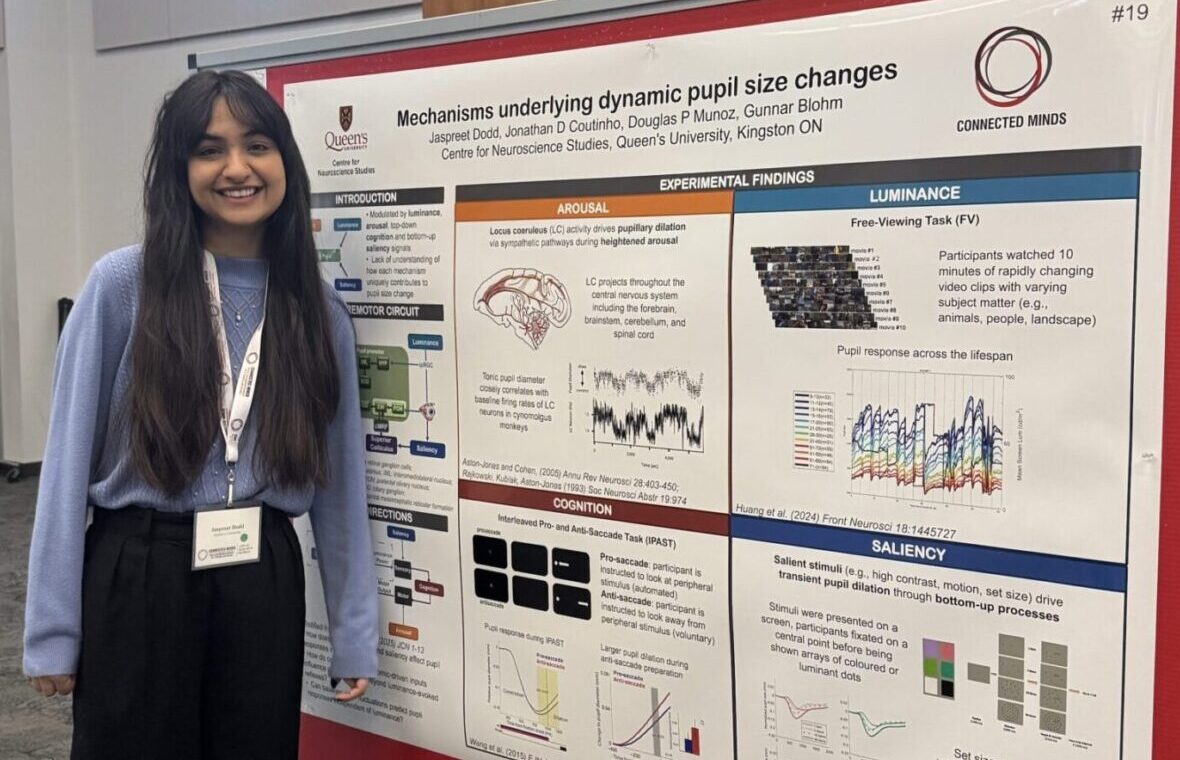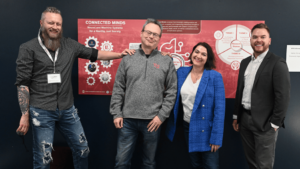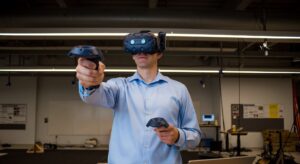On February 27 – 28th, 2025, the second annual Connected Minds Research Retreat was held at York University. I arrived expecting to learn from panels, listen to poster presentations, and network. Instead, I left with questions about how interdisciplinary collaboration and ethics shape the ever-evolving landscape of neuroscience, technology, and society. More importantly, I found myself reflecting on how I, as a graduate student, can shape my own training to become an informed, well-rounded, and adaptable researcher.
This year’s retreat was the first one attended by graduate trainees and postdoctoral fellows. Though I was aware of the incredible scope of research by Connected Minds, it wasn’t until I was talking to my fellow trainees that I grasped the unique community being developed across widely varying fields. One moment, I was listening to an engineer discuss robotics, the next an artist challenging the way we think about technology. It was informative, but more importantly, it was eye-opening and perspective changing.
The more immersed I became in the retreat, the more I felt inspired by the power of interdisciplinary collaboration, the role of trainee voices in shaping these interactions, and the ethical considerations that should guide this work, especially in relation to artificial intelligence (AI).
The Power of Interdisciplinary Collaboration
One of my biggest takeaways from the retreat was learning how seemingly unrelated disciplines– neuroscience, engineering, arts, ethics, and more– can come together to tackle complex questions. I came to realize that effective collaboration does not just mean pooling together different areas of expertise, but rather, it is about learning how to communicate across different ways of thinking and problem-solving.
In one panel discussion, Dr. Anne Sullivan highlighted how each discipline has its own distinct priorities, methodologies, and even language, creating barriers to collaboration. For instance, as a neuroscientist I may discuss precise behavioural measurements and neural processing, but an artist speaks in terms of expression and interpretation, while an engineer focuses on efficiency and optimization. It made me reflect on my own research: how can I make my work accessible to people outside of my field? How can I remain open to different ways of thinking?
The co-creation panel featured several researchers who had worked on a team together, where they further emphasized that co-creation requires more than just assembling experts, but rather, it demands intentionality, shared purpose, and ongoing relationship-building. It made me question: how are we ensuring that collaborations are meaningful and serve a real purpose? How can you ensure you are building relationships that are built on trust and accountability? I continue to ponder these and related questions.
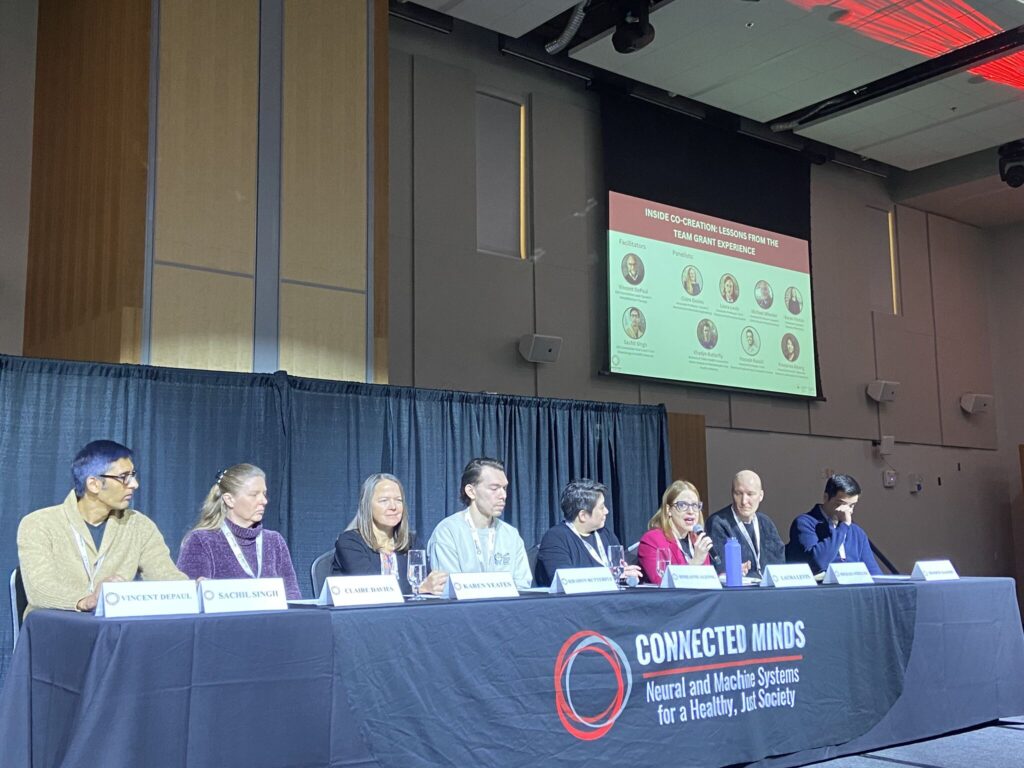
Trainee Voices at the Forefront
A standout event was the trainee poster sessions. Speaking to my fellow trainees, the consensus was that we engaged most meaningfully with faculty and other researchers in these sessions. The poster sessions were not just an opportunity to showcase our work, but they were also a chance to exchange ideas with researchers across disciplines and receive valuable feedback.
Going into the retreat, I was unsure how my work would fit into the larger Connected Minds framework. But as I explored and discussed others’ research, I was motivated by the vast range of topics. Moreover, I came to realize how interconnected our research really is. Though topics ranged from AI-driven healthcare, to ethical neurotechnology, autobiographical performance, and Indigenous language revitalization– all vastly different topics — these conversations inspired us to find common ground and it seemed there were always threads that tie us together.
I am just beginning my research career, but trainee involvement at this year’s retreat highlighted to me that I am not a passive observer. Alongside other trainees, I am an active part of an ongoing conversation in which everyone’s unique perspectives and experience matters. These conversations give me confidence that I have found future collaborators.
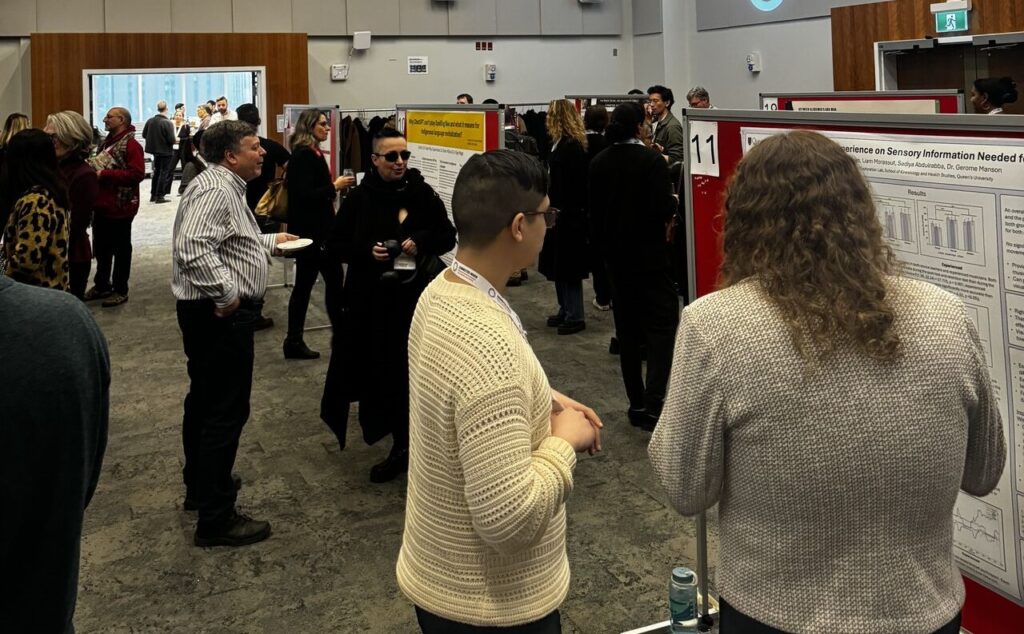
Ethical Considerations for AI
While the retreat showcased advancements in AI and neuroscience, it also made me question: what are the ethical trade-offs and implications of these innovations?
One conversation that stuck with me came from Dr. Qingguo Li, who posed the question: “how much do we really need AI assistance?” It made me rethink the future of AI-driven development, especially technological progress. We often assume that more AI is better to enhance efficiency and reduce human-error, but what if there are cases when AI is unnecessary– or even actively harmful? Are we optimizing AI for human benefit, or are we at risk at creating over-the-top, unnecessary, or over-engineered “solutions”?
“How much do we really need AI assistance?”, Dr. Qingguo Li
This concern tied into a broader discussion on bias and equity in AI-driven healthcare. Dr. Sachil Singh highlighted how biases (such as those held by hospital data scientists) can create disparities in healthcare algorithms, ultimately harming marginalized patients. What stayed with me is that this issue isn’t caused by AI, but rather, it is a fundamental inequality that exists independent of AI . As echoed by Dr. Laleh Seyyed-Kalantri, “even without AI, the current algorithms and procedures being used in hospital settings [lead] to inequalities.” If the system itself is inequitable, then introducing AI without addressing these underlying disparities may only reinforce existing harm.
“Even without AI, the current algorithms and procedures being used in hospital settings [lead] to inequalities,” Dr. Laleh Seyyed-Kalantri
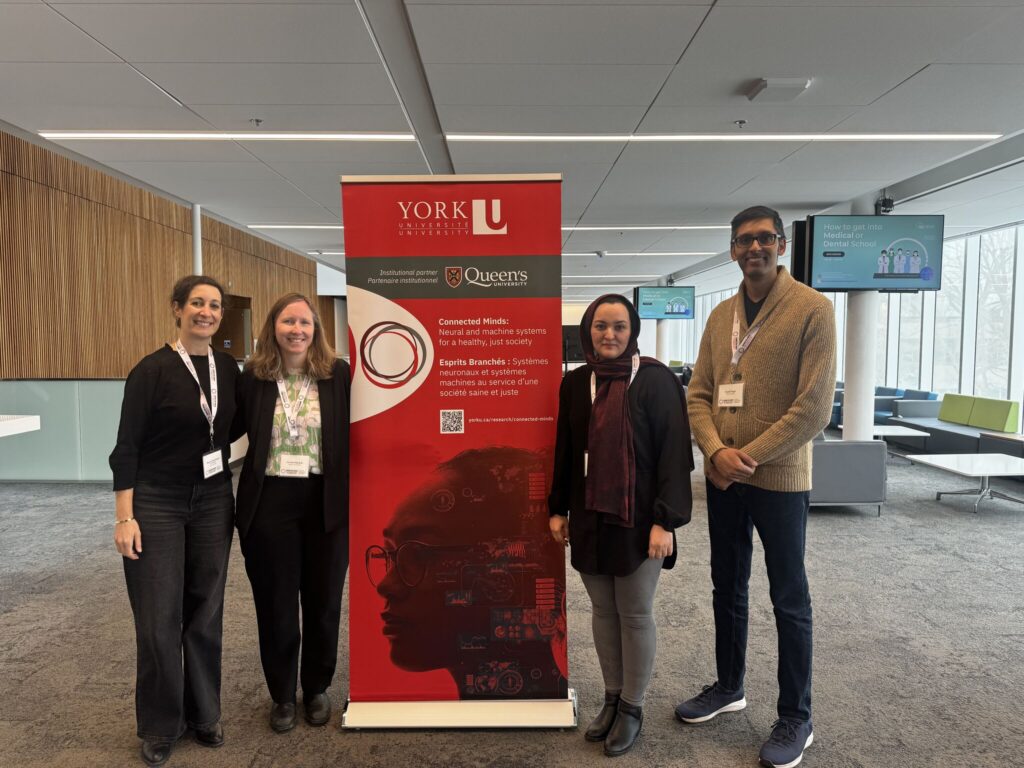
Conclusions: Looking Forward
At the end of the retreat, I had more questions than when I arrived , but I’ve come to realize that this is exactly the point. The Connected Minds retreat was meant to challenge me on what it means to be a researcher in today’s evolving world.
While I came expecting to absorb information, I left recognizing that meaningful research is not just about answering complex questions. It’s about learning how to ask the right ones. What does meaningful interdisciplinary collaboration actually look like? How do we ensure work is ethical? And as a trainee, how do I find my own voice at the table?
What will stay with me are the connections and perspectives I made that have pushed me to think differently about my work and the broader research community. Though I don’t have all the answers to the questions I asked, and likely never will, this retreat left me better equipped to engage with these questions than when I arrived. One aspect of growth as a researcher is to continuously question, refine, and expand the way we approach research. To me, that’s what being part of Connected Minds is all about.
Read more about each panel and associated speakers below:
- The retreat kicked off with the Precision in Motion: AI, Biomechanics and Neural Dynamics panel facilitated by Dr. Douglas Crawford (Neuroscience, York). Panel members Dr. Emily Oby (Biomedical Science, Queen’s), Dr. Qingguo Li (Mechanical Engineering, Queen’s), and Dr. Michael Kalu (Rehabilitation Therapy, York) explored how AI is transforming biomechanics, rehabilitation, and BCIs.
- The Indigenous Advisory Circle in Action panel featured Danica Pawlick-Potts (Communications, York), Nathan Brinklow (Indigenous Education, Queen’s & UVic), Dr. Dean Ray (Indigenous Languages, York), and Dr. Michael Sherbert (Indigenous Knowledge and AI, Queen’s). This panel explored how AI and neurotechnology can be developed in ways that respect Indigenous sovereignty, ethics, and knowledge systems.
- Meet the Connected Minds: Artists in Residence panel was facilitated by Laura Levin (Art & Lead Partnerships Committee, York) this session featured artists in residence Ar Ducao and Gala Hernández López. They discussed how creative expression intersects with technology to challenge existing scientific narratives.
- Interdisciplinary Innovations: Bridging Art, Technology, and Science panel explored the power of interdisciplinary collaboration specifically between artists, engineers, and neuroscientists to bridge art with technology and science. The panel was facilitated by Dr. Gunnar Blohm (Neuroscience & Vice Director, Queen’s), and featured panelists Dr. Anne Sullivan (Computational Art, York), Dr. Matthew Pan (Electrical Engineering, Queen’s) and Dr. Joseph DeSouza (Neuroscience, York).
- The Inside Co-Creation: Lessons from the Team Grant Experience panel featured facilitators: Dr. Sachil Singh & Dr. Vincent DePaul and panelists: Dr. Claire Davies, Dr. Karen Yeates, Khadyn Butterfly, Dr. Roseanne Aleong, Laura Levin, Dr. Michael Wheeler, & Dr. Hossein Kassiri.
- AI, Equity, and Representation: Building Inclusive and Ethical Systems for Health and Well-being panel tackled the question on how we build inclusive and ethical health systems. It was led by Dr. Shayna Rosenbaum (Neuroscience & Vice Director, York) and featured panelists Dr. Laleh Seyyed-Kalantari (Engineering, York), Dr. Sachil Singh (Health, York), and Dr. Crystal MacKay (Rehabilitation Therapy, Queen’s).
- The final panel examined how ethical frameworks for technology and data can shape a responsible digital economy. Facilitated by Dr. Pina D’Agostino (Law & Scientific Director, York), the discussion featured panelists Dr. Kean Birch (Technoscience and Society, York), Danica Pawlick-Potts (Communications, York), and Dr. Rebecca Caines (Creative Technologies, York).
